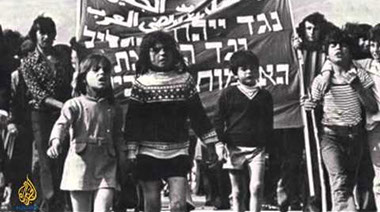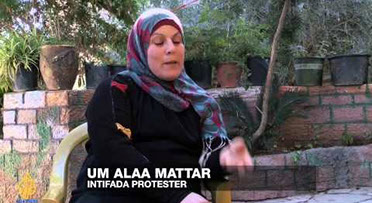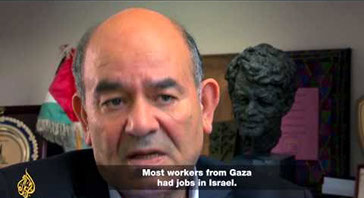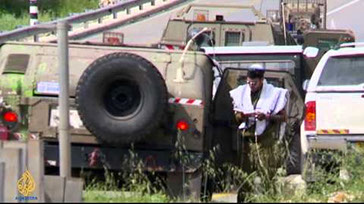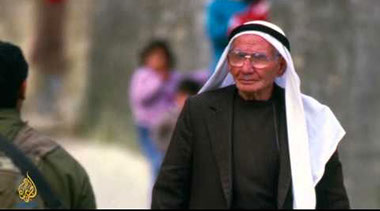Mariam Shahin
Film Director
STORIES FROM THE INTIFADA
From 1987–1993, more than 1,300 Palestinians were killed, more than 120,000 were wounded, and some 600,000 were jailed. These are stories from the First Palestinian Intifada (uprising), which erupted in 1987.
Over the course of six days in June 1967, Israel captured an estimated 2,400 square miles of Palestinian land in the West Bank (including East Jerusalem) and Gaza Strip, in addition to the Egyptian Sinai and the Syrian Golan Heights. The Zionist project expanded by unilateral annexation and territorial gains, while more than 300,000 Palestinians were expelled from their homes to neighbouring countries.
Israeli settlements were established on Palestinian land as part of Israel’s broader strategy to create a Jewish majority in historical Palestine, and change the demography of the newly-occupied territories. A decade after 1967, Israel had already built 45 settlements, militarised colonies dotted across the occupied West Bank and Gaza Strip.
Any Palestinian who lives under occupation knows the meaning of movement restrictions. With dozens of Israeli military checkpoints and settlements, it is difficult to go from one city to another. Ironically, according to some estimates, Palestinians paid about $800 million in taxes for two decades after 1967, twice the amount the Israeli government spent on them during the same period.
Though Israel completed its conquest of historical Palestine in 1967, it continued to grab more land from those Palestinians inside Israel who had remained and received (second class) citizenship. In the spring of 1976, the Palestinians living inside Israel had had enough, and hundreds of Palestinians gathered for the first public protest against the slow-motion theft of their land.
Land Day in 1976 marked a turning point in Palestinian nationalism, as more and more Palestinians decided to demonstrate inside Israel and in the OPT. The unrest lasted for months, with 48 Palestinians estimated to have been killed in the first round of protests.
In 1987, Palestinians under occupation also said ‘enough is enough’. It began with the killing of four unarmed labourers from the Jabalya refugee camp in Gaza, who were run over by Israeli soldiers in what Israel called an accident, and Palestinians eyewitnesses called a deliberate act of vengeance following the deaths of six Israeli soldiers at the hands of two Arab resistance fighters. This was the beginning of the First Intifada.
Intifada in Arabic means ‘to shake off’ or ‘to wake up’, and thousands of Palestinians joined massive demonstrations to show Israel that its brutal occupation was no longer acceptable.
December 8, 1987, marked the official start of the First Intifada. For six years, street battles were fought and won with stones. According to the United Nations, over 1,000 Palestinians were killed from 1987-1993.
The First Intifada has often been seen as a revolution of the mosques which, along with secular forces, gave the movement a direction. Islamic Jihad and the Muslim Brotherhood became important groups leading students and ordinary Palestinians, and in 1987, the creation of Hamas was announced.
Workers went on strikes, residents withdrew taxes, mothers started home-schooling their children as part of a social solidarity movement. In Beit Sahour, Palestinian residents defiantly threw away their mandatory, Israeli-issued ID cards as part of civil disobedience.
Some 80,000 Israeli soldiers were deployed to contain an uprising by more than half a million Palestinians. When everything else failed, Israel gave a free hand to its soldiers to unleash terror, often on unarmed Palestinians.
Under Israeli occupation, the expression of Palestinian nationalism was prohibited. The Palestinian flag was banned, the use of the word Palestine could result in harsh imprisonment, and yet many were undeterred in their struggle against the oppression of colonial occupation.
Palestinian nationalism gathered strength in unity marches, as both secular forces and Islamist movements galvanized the youth with their spirited protest songs. Dozens of Palestinian artists were jailed, while new songs smuggled out from prison became the rallying calls for hundreds of protesters outside.
Israel tried to splinter the movement by recruiting collaborators or informants. During the First Intifada, 800 Palestinians were killed by resistance fighters for alleged collusion with Israel.
WATCH THE FILM
WATCH PART 1
WATCH PART 2
INTIFADA
OCCUPIED PALESTINIAN TERRITORIES
CREDITS
DIRECTED BY
MARIAM SHAHIN
DIRECTOR OF PHOTOGRAPHY
GEORGE AZAR
PRODUCER
SIRI AL-KHALILI
CAMERAMEN
HAFSEP NAPALIAN
GARO NAPALIAN
MO'NES ABU NAHEL
HAFEZ OMAR
HAMOUDI TARAD
OSAMA BOUATEL
EDITOR
EYAD HAMAM
PRODUCTION HOUSE
MAYSARA FILMS, JORDAN
GREYSCALE, JORDAN
COMMISSIONING SENIOR PRODUCER
RAWAN DAMEN
PRODUCTION YEAR
2014
REVERSIONED BY AL JAZEERA WORLD TO ENGLISH – 2014
COPYRIGHT © ALL RIGHTS RESERVED FOR AL JAZEERA
RETURN TO TOP


